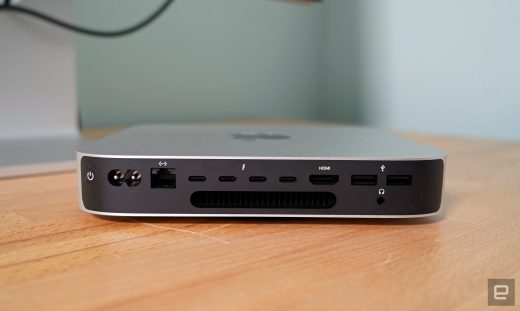Mac mini review (M2 Pro, 2023): Just call it a Mac mini Pro
The Mac Mini has had a rough few years. Its last update, in 2014, was disappointing. After offering quad-core CPUs on the 2011 and 2012 editions, the 2014 model was stuck with a dual-core CPU. This meant it was actually slower at some tasks than the computer it was supposed to replace. Add in the fact that aside from storage it was not upgradable, and you had a computer that left a lot of users unhappy. Amazingly, until last month the 2014 Mini was still available on Apple’s web store for $500. The lack of updates over the past four years left a lot of us wondering if we’d ever see a new model.
Fortunately, Apple has rectified the situation with the 2018 Mini. This new model retains the unibody design that we loved on the 2014 edition but sports a sleek space-gray color — a first for the Mini line. (It’s also now made entirely from recycled aluminum, as is the new MacBook Air.) With vastly improved components, the Mini is now a viable competitor in the compact-desktop market.
And it does have competition. In the past four years, micro PCs have vastly improved, and most of the major manufacturers now offer a tiny Windows machine. Still, I was impressed with the Mini’s performance, and it’s the cheapest way to get a macOS machine. Despite this, the 2018 Mini has a few flaws that will probably keep it from being the best choice for most people.
Apple Mac Mini (2018)
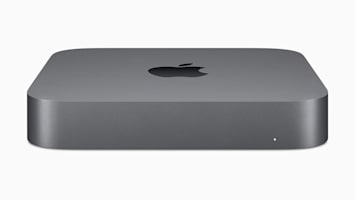
Pros
- Compact design
- Versatile port selection including USB Type-A and HDMI
- Fast CPU performance
- Least expensive Mac in Apple’s lineup
Cons
- Limited graphics performance (and no meaningful way to improve it)
- Upgrade options get expensive fast
- RAM isn’t technically user upgradeable
Hardware
The most impressive thing about the new Mini is its selection of ports. There’s Ethernet, a headphone jack and four USB-C connections (supporting Thunderbolt 3). It also sports a full-size HDMI port and two old-school USB-3 Type-A ports. Apple has been so aggressive about removing useful ports I was worried we’d see a box with nothing but a pair of USB-C inputs. The connectivity options make the new Mini easy to customize, with the option to add external SSDs, external GPUS or whatever else you might need. Unfortunately, shared controllers mean those Thunderbolt ports can only support two displays but add in the HDMI and you can run three 4K monitors from the Mini (or one 5K and one 4K display).
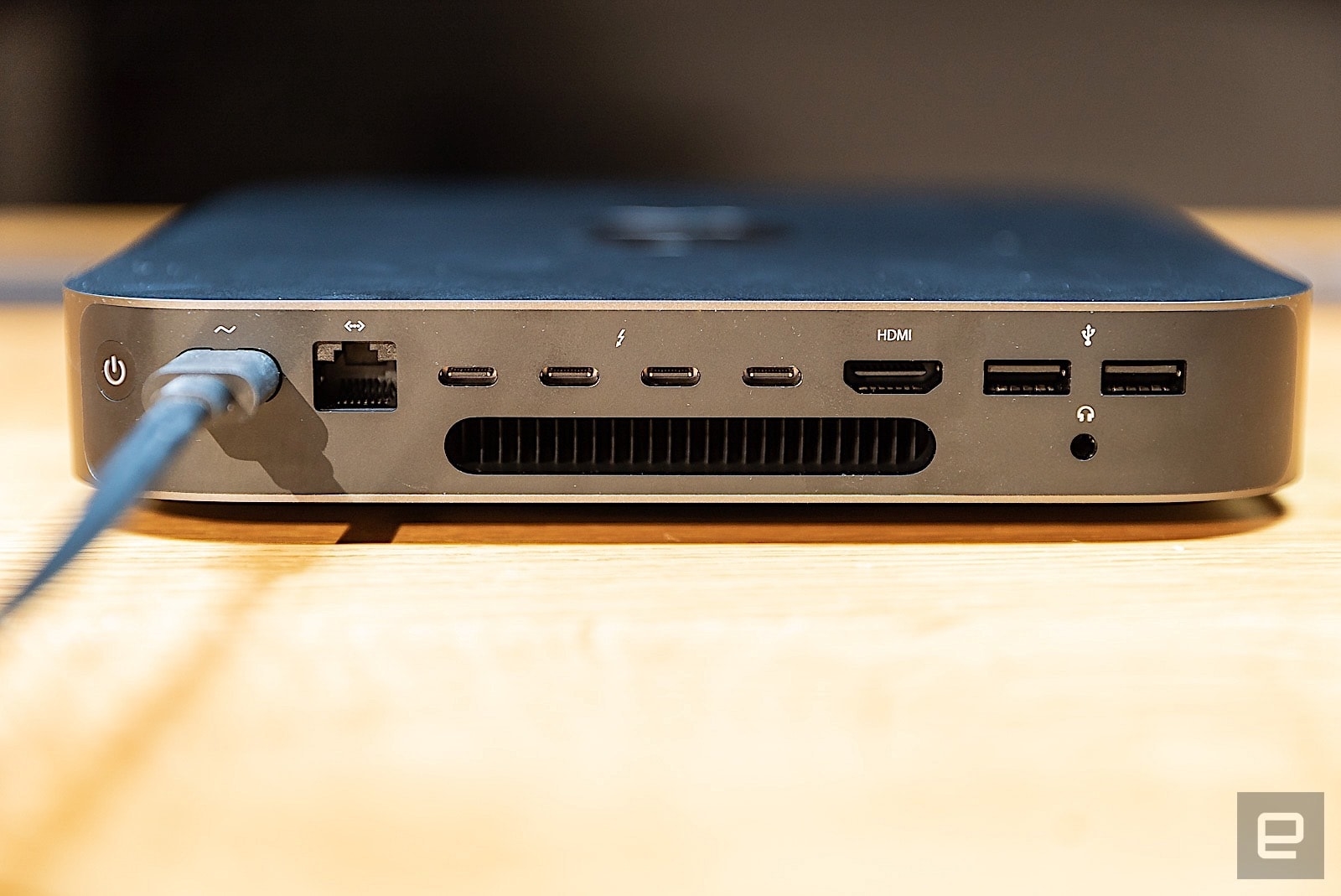
Compared to previous Minis, you do lose the analog microphone input, but considering USB-based digital-analog converters are plentiful and effective, that’s not a huge loss.
I tested the entry-level $799 model, which comes with a quad-core, 3.6GHz Intel Core ii3-8100b processor, Intel UHD 630 graphics, 8GB of RAM and a 128GB SSD. Intel’s b-series processors are soldered/integrated versions of their full desktop chips, and this one was pretty impressive, though the i3 model in my test unit doesn’t support either hyperthreading or turbo boost speeds, in case those things are important to you.
Unlike the 2014 Mini, you can upgrade the RAM in the new model yourself, though it’s challenging enough that Apple recommends you have the work done at a service center. If you don’t want to pay Apple’s price for RAM (frequently two to three times market rate) you can do it yourself, but it’ll take a set of Torx drivers and you can kiss your warranty goodbye.
Performance
Previous Mac Minis were positioned as low-cost computers for the home or office, and the new model excels at those tasks. Its i3 chip is more than up to handling word processing, multiple browser tabs, video streaming and music playback. Unlike earlier models, though, Apple is clearly positioning the new Mini as a machine for designers and other professionals. The company’s website describes it as a “workhorse” and lists advanced rendering software like Autodesk Maya and Luxion Keyshot among the apps that should see improved performance. So the real question is: How does this computer perform compared to Apple’s other “pro” machines? The answer there is a little tricky.
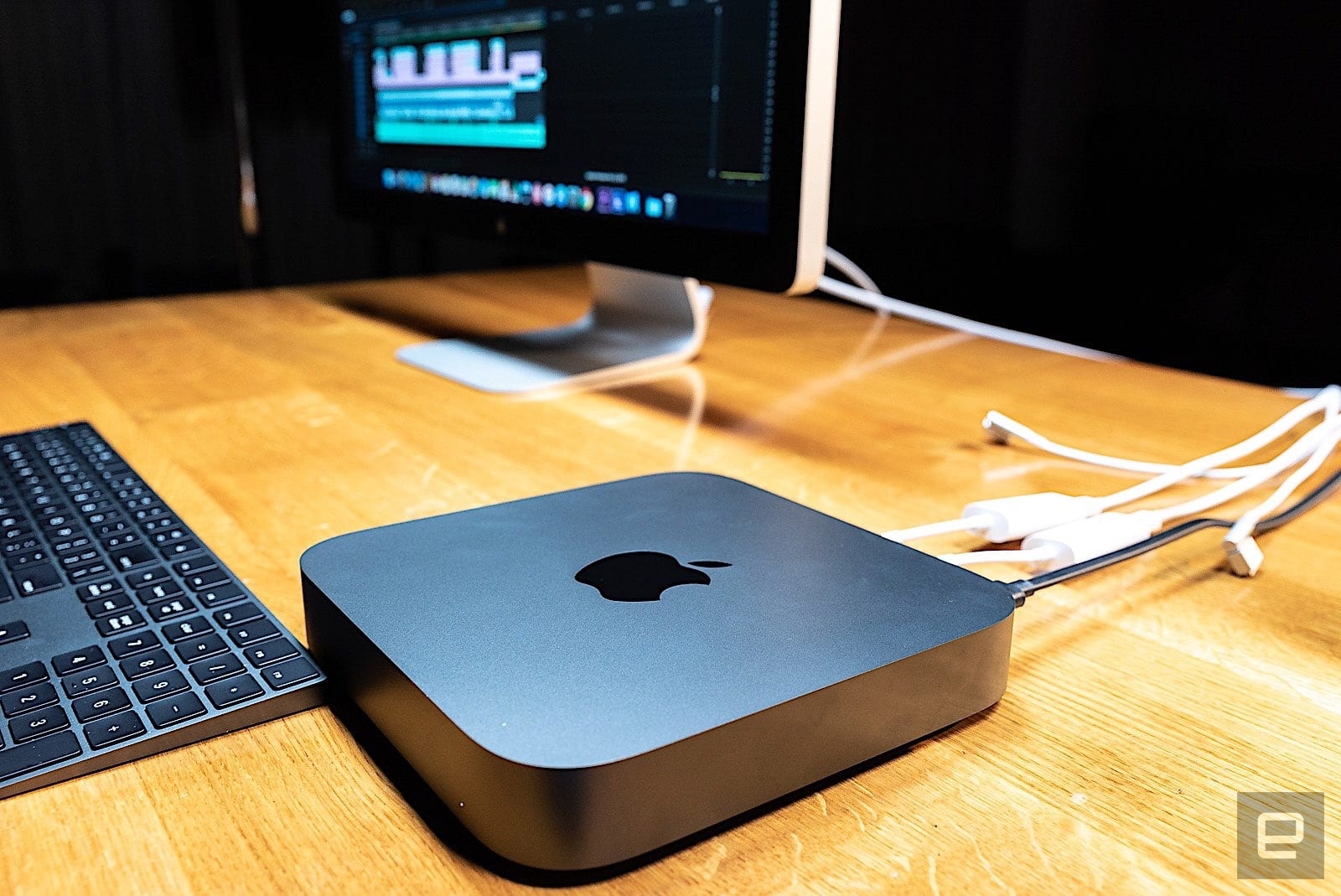
In Cinebench, which analyzes CPU and GPU processing for graphics rendering, the Mini did pretty well. In single-core CPU performance, it edged past the i7 in a MacBook Pro and was only about 15 percent slower than the Xeon chip in an iMac Pro. In multicore testing, though, the lack of hyperthreading was obvious, as the Mini fell 20 percent behind the MacBook Pro, and was only one third as fast as the iMac Pro.
Geekbench 4 single-core results were more encouraging, with the Mini’s i3 outperforming the MacBook Pro by a hair, and approaching the iMac Pro. In multicore, the Mac Mini was also only about 5 percent slower than the MacBook Pro, though it still fell more than 50 percent behind the iMac.
In fairness, the Mini costs less than a third of either of these systems, and its i3 processor is more powerful than I would have expected, but while the CPU might have given a strong performance, with graphics the Mini struggled. In Cinebench’s GPU test, the Mini was only able to manage half of the MacBook Pro’s performance and one-third of the iMac Pro.
Geekbench painted a similarly disappointing picture. Against its OpenCL computer test, the integrated Intel graphics in the Mini were 40 percent slower than the MacBook Pro and scored only about one eighth the speed of the iMac Pro.
Benchmarks are only part of the picture, though. I’m not a programmer or a 3D designer, but I am a video editor, and to provide a real-world test I edited an episode of Engadget Today on the 2018 Mini using Premiere Pro.
The Mini performed better than I expected. Cutting footage, moving it around the timeline and basic playback were all smooth. It even played back 4K footage from my Sony FS5 with barely a hitch. The limitations of the machine become particularly apparent when I began adding titles and color-correction. Premiere Pro (and most editing software) relies heavily on the GPU to render real-time previews once you’ve started modifying the footage with color and effects. That proved to be a real challenge for the Mini, and the preview playback became increasingly choppy as I added even basic effects. Reducing the playback resolution helped a bit, but at a certain point, the footage just became challenging to work with.
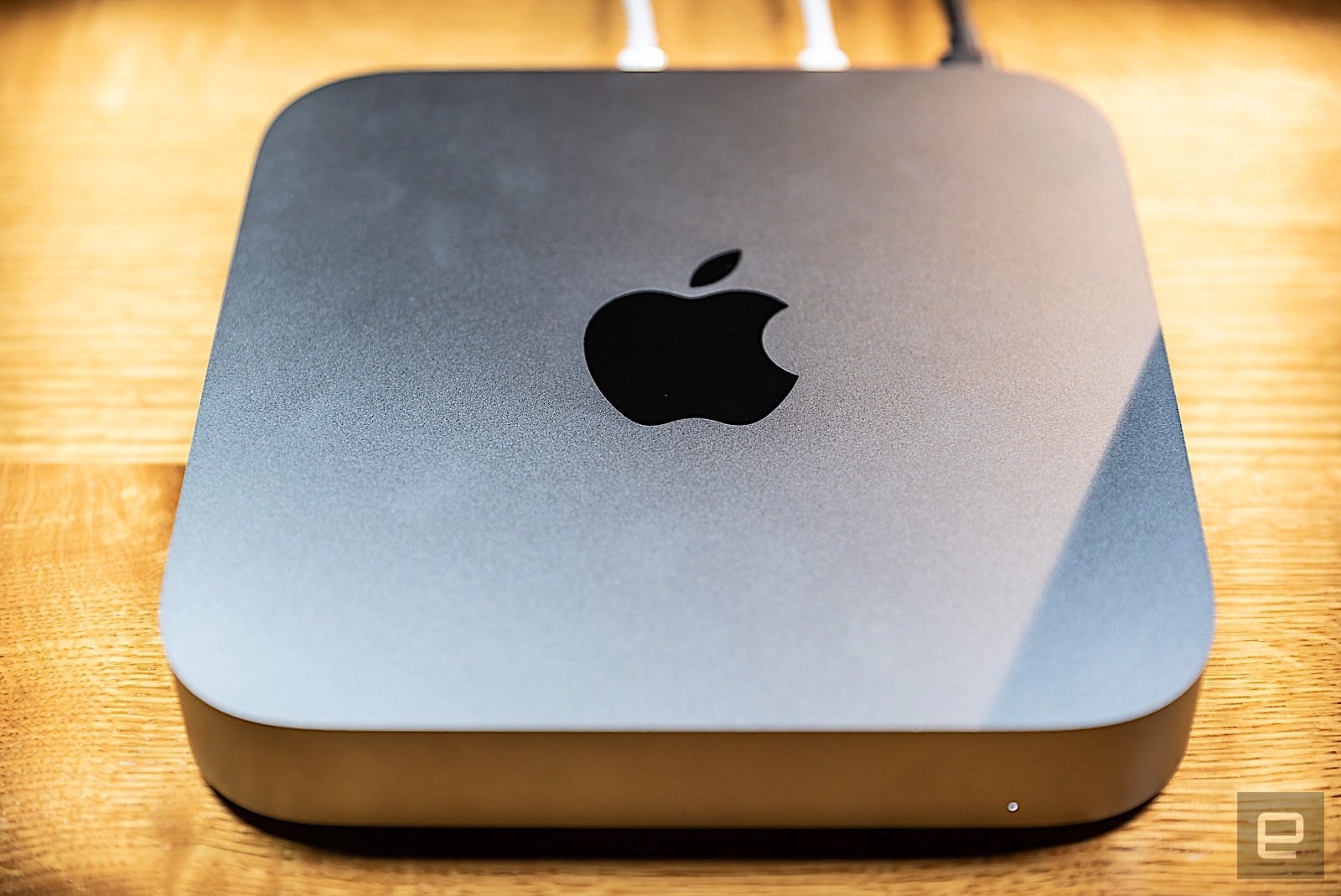
On one test of 4K footage using color, correction, a blur and a title, the Mini managed to display only 10 percent of the frames during a 10-second playback. And forget about working at double speed (which many editors do to save time); once effects were added, the audio wouldn’t even play if I tried to preview faster than real-time. Even using proxies (low-res temporary files in a format that should be easier for the program to read) barely helped the situation.
When exporting the footage, a task that generally doesn’t rely heavily on the GPU, the Mini performed better. Despite the effects and color correction, Engadget Today came out with no glitches, though it took nearly three times as long as it does on the iMac Pro.
Another test, transcoding a CineForm file to MP4, worked even better: The Mini was just slightly slower than my MacBook Pro, and about half as fast as the iMac Pro.
The lack of a dedicated graphics processor really seems to be the weak point here, and unfortunately, there’s no easy way to rectify that. There are only three processors available for the Mini, and no option to add a discrete GPU. An extra $300 on the base model we’ve been testing will get you a 3.2 GHz six-core processor with hyperthreading and Turbo Boost up to 4.6 GHz. That’s probably enough speed to leave the MacBook Pro in the dust, and should give the Mini some serious CPU processing power, but it won’t improve the graphics performance at all. Apple is clearly expecting some people will use the Mac Mini with an external GPU, but that’s at least an additional $500, and hooking up a bulky box with its own fans and power supply seems to defeat the purpose of a compact machine.
For a sense of how poor the graphics performance is, I tried one more test, Unigine’s Valley benchmark. This is the most recent test available for macOS, and while Unigine’s benchmarks are intended as extreme stress tests for gaming graphics performance, Valley is from 2013, so it’s not exactly cutting-edge. Even so, on the lowest “basic” settings, at 1,280 x 720 resolution, the 2018 Mini could only manage 20 frames per second. Switching to “Extreme” at 1920×1080, that dropped to a pitiful four. Four frames per second. This is definitely not a system for gaming.
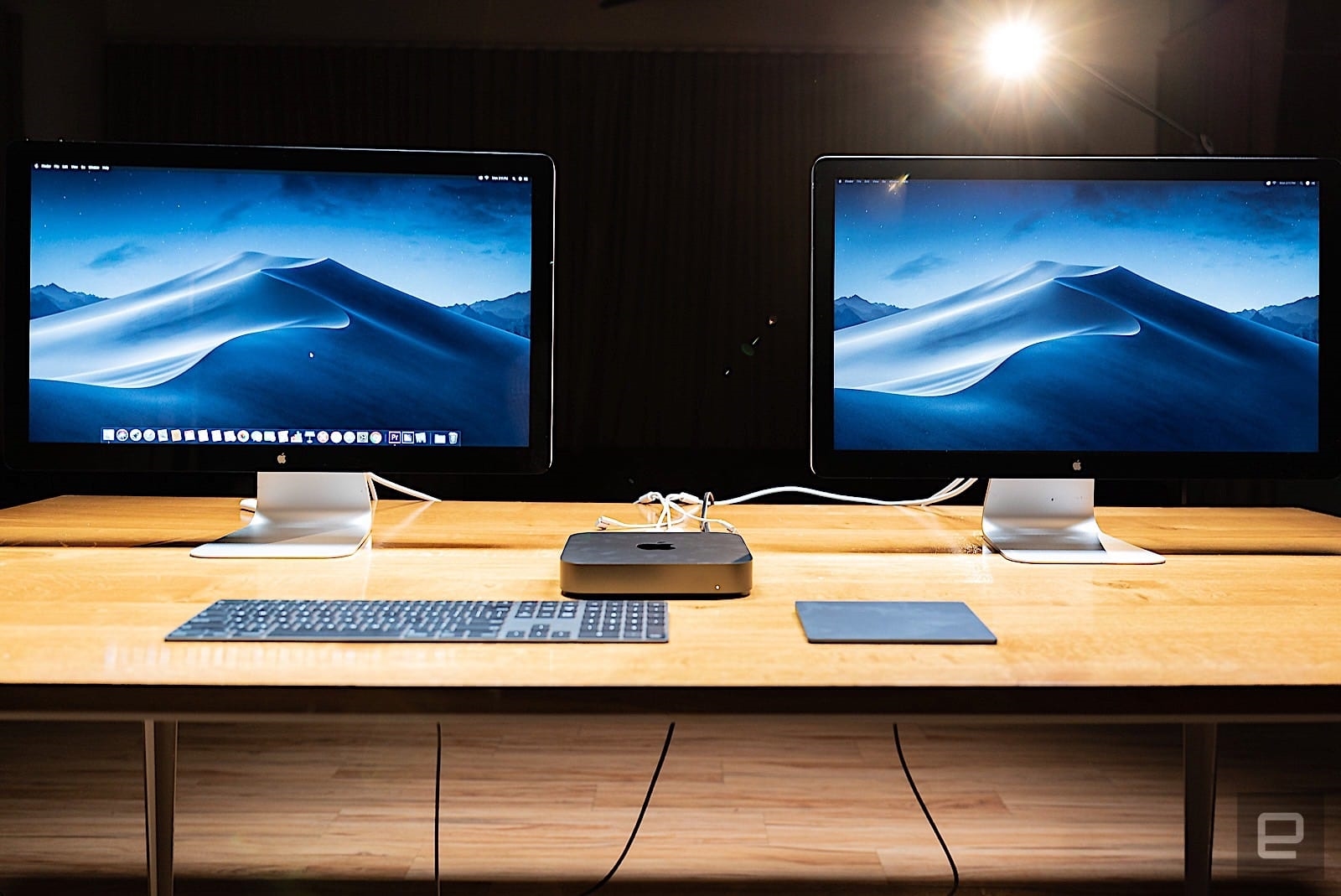
Configuration options and the competition
Beyond the processor, there are a few other components you can upgrade. It costs $200 to double the RAM to 16GB, which might be a worthwhile decision, and you can spend up to $1,400 extra for 64GB if you really need it (64GB RAM kits are hard to find right now, but just $329 will get you 32GB if you don’t buy from Apple). You can also pay thousands for a larger SSD, but with the number of Thunderbolt ports, I’d just recommend an external RAID or SSD.
If you don’t care about having OSX, there are Mini PC alternatives that can provide more graphics power. Intel’s Hades Canyon NUC starts at $719 but doesn’t come with storage and RAM. What it does have is one of Intel’s new Kaby Lake G chips. These are built from an unlikely alliance between Intel and AMD and marry an Intel eighth-gen processor to an AMD Vega GPU. They pack a remarkable amount of performance into a small SoC, and it’s frankly odd this chip isn’t an option in the 2018 Mac Mini, considering AMD graphics are already used in the higher-end iMac and MacBook Pros.
If you aren’t interested in gaming and you really want a professional Mini system, HP’s Z2 Mini G4 packs the same six-core i7 processor, 16GB RAM, and 512GB SSD as a $1,699 Mini, but also includes a pro-grade Nvidia Quadro GPU and can be found for $100 less.
If you’re in the market for a new system and are committed to macOS, the 2018 Mini does have a few selling points. At $799, the base Mini we tested is the cheapest way to get a new Mac today. Despite its poor graphics performance, the Mini’s base processor is solid, and the available $300 upgrade is not a bad way to get a fast six-core processor that should keep the Mini feeling speedy for years. Aside from 3D modeling and video editing, Apple mentions XCode and Music production on their website, and these actually seem like compelling use-cases for the Mini. CPU-dependent tasks like coding and audio engineering make sense for this system and wouldn’t be held back by its specs.
When Apple unveiled the Mini, it floated the idea of chaining multiple Minis together into a “Mini” server, and for serious CPU-based number crunching, that’s actually an intriguing idea. Four Mac Minis upgraded to an i7 and 16GB of RAM would get you 24 cores with 48 threads and 64GB of memory for only $200 more than the eight-core iMac Pro. You would need a pretty specific workload to take advantage of a setup like this (office server? Code compiler? Render farm?), but it’s an interesting concept.
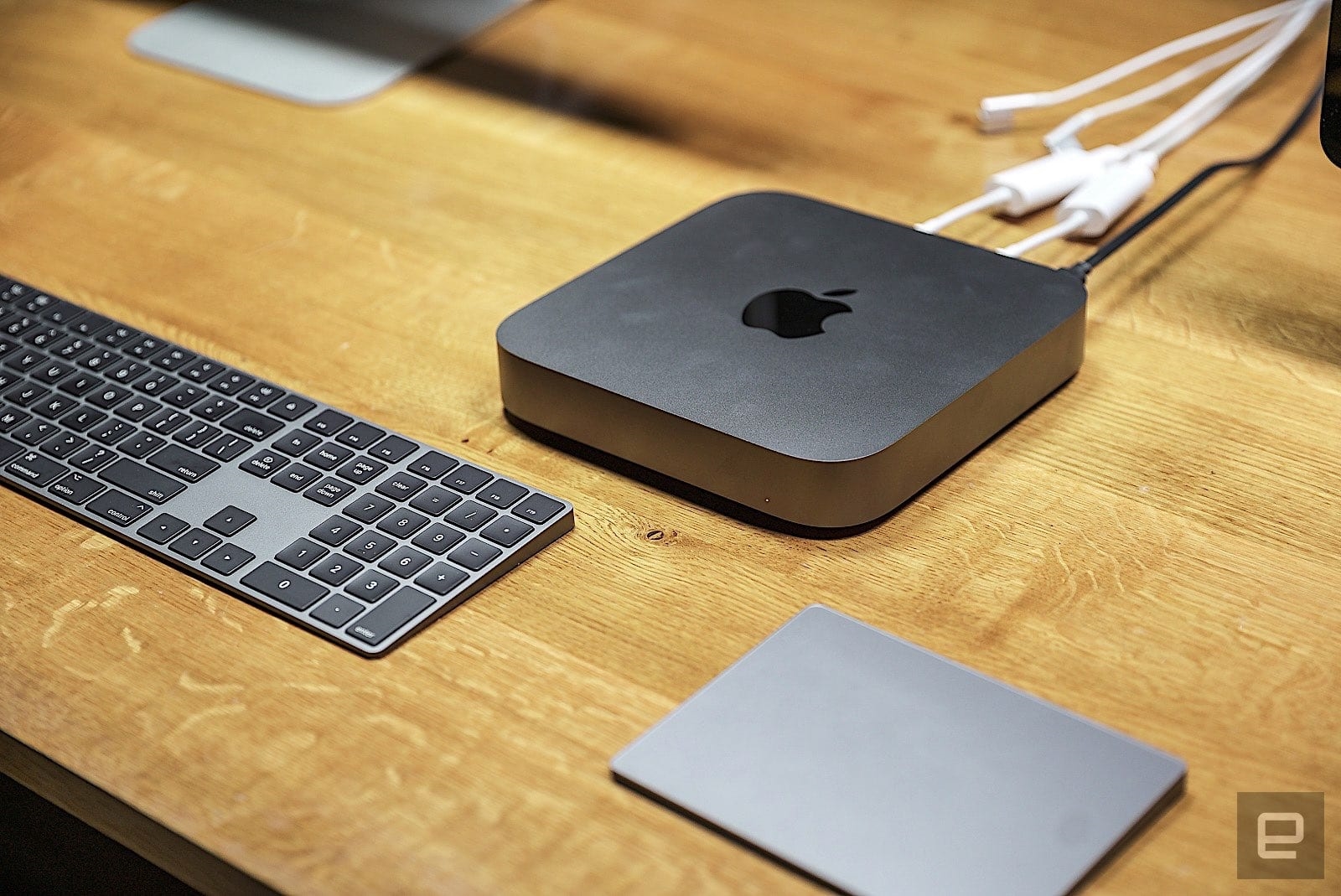
Wrap-up
Apple’s own marketing materials refer to the new mini as “part racehorse, all workhorse,” and though they didn’t go as far as branding this the “Mac Mini Pro” Apple is clearly positioning it as a high-performance computer. This makes the lack of a reasonable GPU all the more confounding. Graphics performance is important for designers and media producers (in fact, both Autodesk Maya and Final Cut Pro can benefit greatly from an OpenCL capable GPU), but graphics cards also power OpenCL or CUDA based compute performance. These types of GPU-driven number crunching are increasingly useful for scientific computing and data analysis tasks like encryption, image recognition, optimization and machine learning.
For music producers and people writing apps in Xcode, maybe the new Mini makes sense, but I don’t imagine most other “pro” users will be happy with this level of performance. I can’t help but shake my head at Apple’s charts and graphics showing off how much faster the new Mini is than the 2014 model. Not only do a lot of the benchmarks they’ve published only highlight CPU intensive tasks (rendering in Keyshot, exporting from Final Cut) instead of actual workflows, but they’re also comparing a $4,300 2018 Mini with a six-core processor and 64GB of RAM to a 2014 machine that couldn’t even beat its own 2012 predecessor. Four years later, I’d certainly hope the new model would be faster.
Maybe this highlights the best professional use case for the new mini. A rendering machine that can handle CPU intensive tasks like compiling code and rendering graphics, but that you wouldn’t actually want to do your daily work on. When Apple unveiled the Mini, it floated the idea of chaining multiple Minis together into a “Mini” server, and for serious CPU-based number crunching, that’s actually an intriguing idea. Four Mac Minis upgraded to an i7 and 16GB of RAM would get you 24 cores with 48 threads and 64GB of memory for only $200 more than the eight-core iMac Pro. You would need a pretty specific workload to take advantage of a setup like this (office server? Code compiler? Render farm?), but it’s an interesting concept.
For general consumers, the Mini seems to fill the role of the family computer in the living room; a small, reliable desktop that should feel speedy and take care of basic work. But with many people having laptops or tablets, how essential is that any more? As a media box, $799 is quite a lot to spend, the aforementioned Apple TV is an easier way to stream, and even a Roku box can get you Netflix and play MP4s off a thumb drive for $100. If performance doesn’t matter to you at all, then the new MacBook Air or even an entry-level MacBook Pro might be a better choice.
All of those caveats aside, I actually like this machine. The design is terrific, and I love the options for add-ons and expandable storage, but I wouldn’t want to have to work on it. It’s possible that there’s a cohort of people out there who are looking for an inexpensive macOS desktop with a ton of useful ports, who don’t care about GPU performance and have been waiting for the past four years for a new computer. For them, the Mac Mini is the perfect fit.
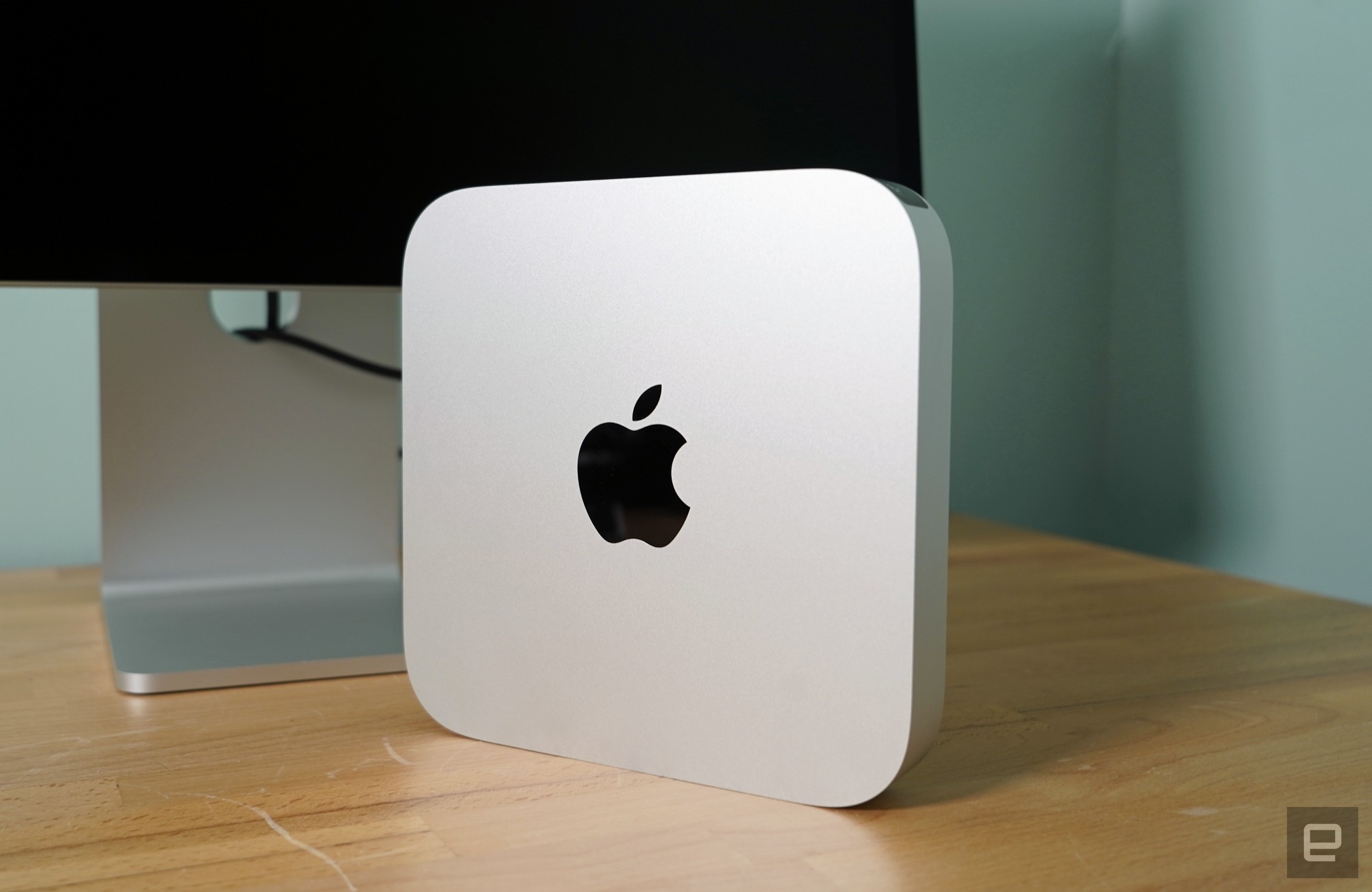
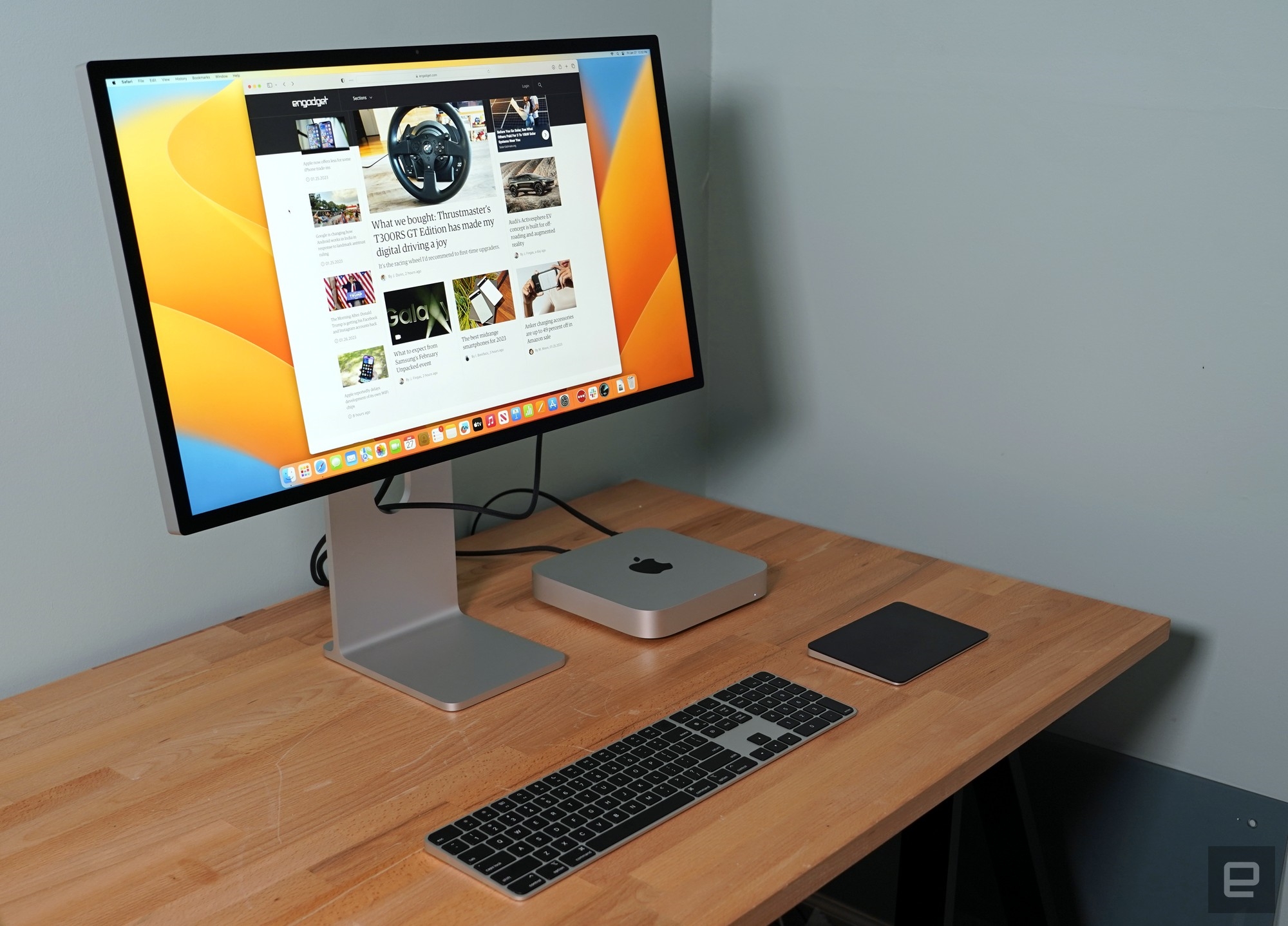
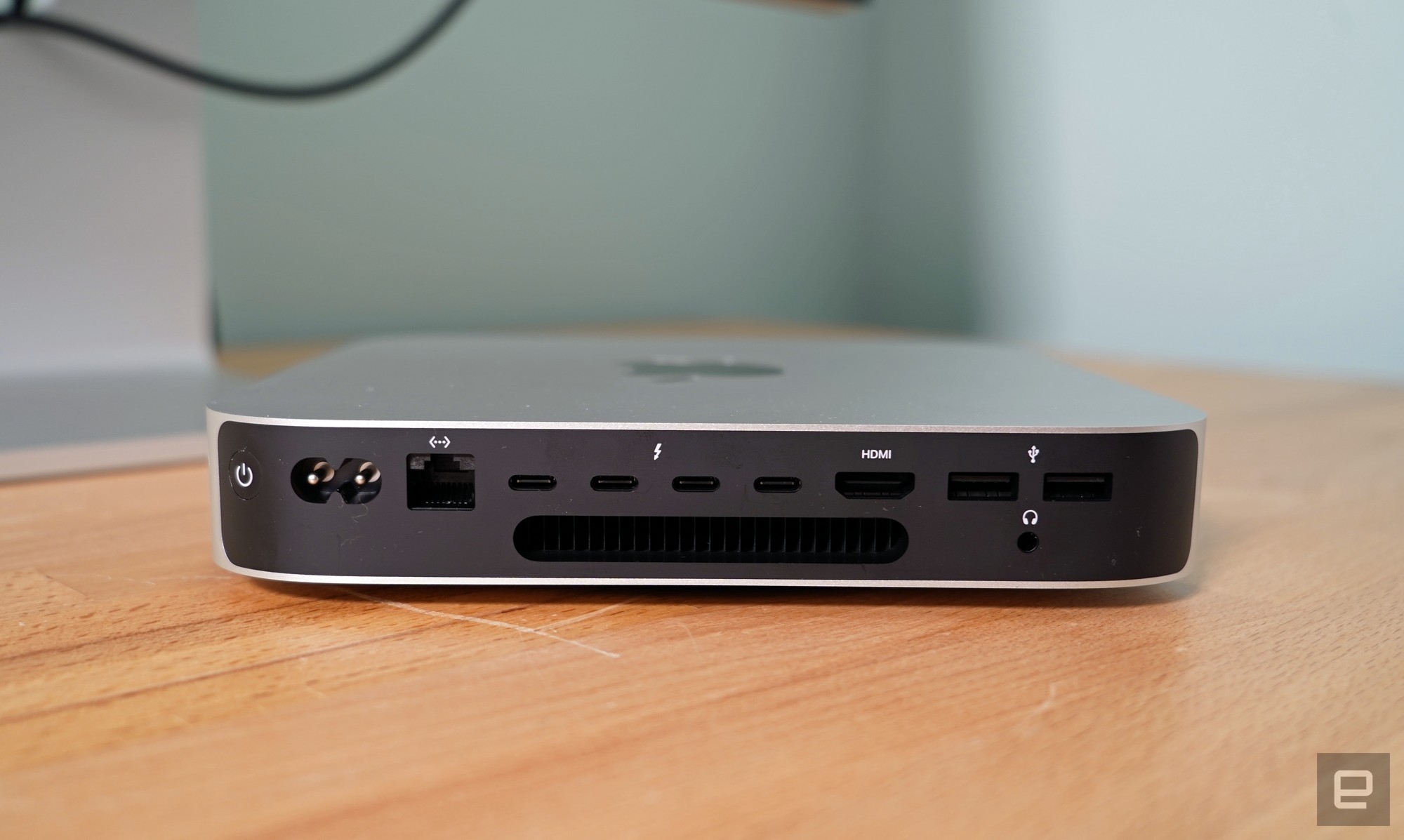
(27)

